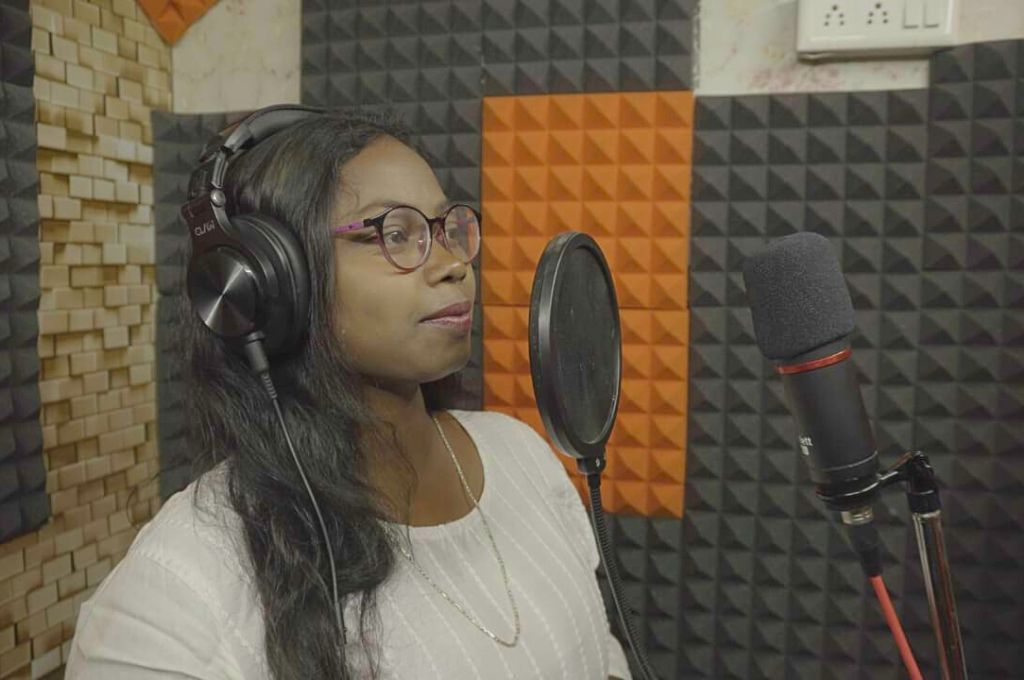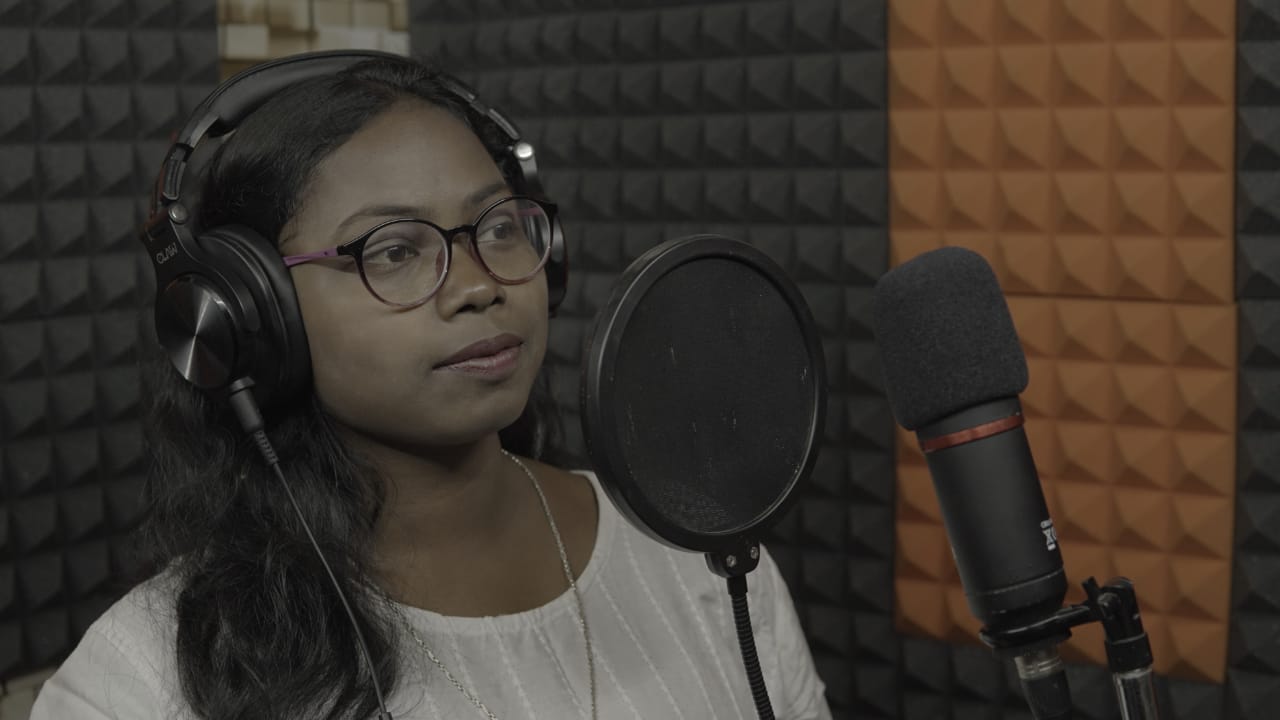I was born in Belpahari, a village in West Bengal’s Jhargram district, into the Santhal community—a nomadic tribe spread across Jharkhand, Odisha, and West Bengal.
I lived in Belpahari with my parents and siblings till I was about four years old. My sister and I were then sent to Kolkata to live with our extended family, so that we could complete our education.
This shift was not easy for me. While the city offered comfort and opportunity, I missed my parents and our community back home. The language also proved to be a barrier. Santhali was my first language and while we continued using it at home, I had to learn Bengali for school.

It was during this time that I discovered the radio. Every evening, I would listen to a programme called ‘Santali Akhra’ with songs and conversations in the Santhali language. I would even role-play as a newsreader and a radio jockey (RJ) for my sister. The radio soon became a means for me to stay connected with my community, and helped dissipate some of the loneliness and alienation I felt growing up in Kolkata.
For a long time, we had just the radio to keep us entertained. Even though we got a television later, I continued to be fascinated by the radio. It amazed me how an RJ, without even showing their face, could connect to so many people. I hoped to do the same some day.
The road to radio
After completing my school education, I tried to convince my parents that I wanted to study mass communication and work as an RJ. But they were against the idea from the beginning. My parents wanted me to pursue a career that would guarantee financial security. But this didn’t stop me from dreaming.
I was preparing to take my apprenticeship exam at a shipbuilding and engineering company when I came across a Facebook post announcing the launch of a new community radio channel, Radio Milan, in Jhargram. The post also mentioned that they were looking for RJs in Santhali. I immediately decided to apply. At the time, I didn’t even know that getting this job would mean becoming India’s first Santhali RJ. The importance of the moniker struck me much later, when I read an article about me in the context of representation of different languages and communities in media.
The first ever radio show I hosted was called ‘Johar Jhargram’ (Greetings Jhargram). It was a show that celebrated Santhali culture and customs, and discussed various aspects of the reality of the community today—their dreams, the challenges they face, and so on. It was a space for community members to share and come together, even though they weren’t in one space physically.
However, it wasn’t all smooth sailing. I had spent many years away from my village, and so I wasn’t really in touch with the Santhali way of life, the language, or the traditions. When our programme started airing, for instance, I received complaints about my improper diction. I couldn’t read the messages we received in the Ol Chiki script used for Santhali either. While it came as a shock initially, I did not let it deter me. I spent all my free time learning everything I could about the Santhali tribe—my community—through various sources. There wasn’t a lot to access as far as the written word was concerned, but I read all that I could about the tribe’s history. What really helped though, in a way that books never could, was talking and interacting with people in my village. I spoke with my neighbours and many others about their life experiences, their hopes, and their dreams. I would also sit in the village market for hours, observing how people interact with each other. I would take my notebook and write down everything I noticed. At home, I actively participated in all the rituals and festivities such as the Baha Porob, where, at the onset of a new agricultural year in spring, we offer flowers to the Bongas (spiritual beings in the Santhali religion) and seek their blessings for the protection of the crops. I also learned about our harvest festival called Sohrai—which coincides with Diwali—during which women decorate their houses with murals to celebrate and welcome the harvest, and we honour our livestock.

The customs, culture, and people’s participation and interaction with one another is something I couldn’t have gained knowledge of without first-hand experience. This strengthened my resolve to use the platform that I had to connect to the Santhali community and bring forward their stories and their truth in an honest and authentic way.

Radio for advocacy and awareness
On my programme ‘Johar Jhargram’, I would often invite guests to shed light on the ground realities of their community and discuss the issues they were facing. We would also get calls from our listeners, who would share their problems on the show.
I was given the freedom to script the shows based on my interactions with listeners and my own understanding and observations of what I thought would resonate with them. One of my most successful broadcasts, which I feel particularly proud of, included conversations around intezaar karna (themes of waiting). I came up with this idea because I felt that the concept of waiting was a universal subject that everyone can relate to, as we are all always waiting for something to happen. It starts from childhood itself—first we wait to grow up, then to graduate, then to build a life. We are always waiting for things to happen to us or for us.
Another one of my favourite broadcasts was on Women’s Day. I decided to do this particular show because I felt that the noise around this particular day was all show and no substance. While everyone celebrated this day, nothing really changed in reality for women. For instance, in my area, women are primarily employed in the sale of alcohol. Through this broadcast, my attempt was to spread awareness about numerous other opportunities that they may be unaware of. The aim was to inform them of choices, and how they could engage in all kinds of work to have their own sources of income.
The response to these conversations made me feel that I was able to create something substantial for our community. As a faceless voice for many, through the radio, I was able to connect to the community at large in a way that I could have never imagined. Their feedback made me realise just how many people were engaged in the discussions I was hosting, proving how impactful representation of different voices, cultures, and experiences in media can be.
Almost three years into working as an RJ at Radio Milan, I decided to move on in 2020. I wasn’t sure of what I wanted to do next, so I decided to return to my village to live with my parents. This was at the peak of COVID-19, and there was an air of uncertainty and fear across the country. However, people in my village refused to acknowledge the pandemic. They believed they were healthy and what they called the ‘city disease’ wouldn’t affect them as they were cut off from cities. The absence of a trusted source for news meant that people were relying on whatever they heard from others. Many even refused to get the vaccine. I tried to counter any misinformation that was being spread about COVID-19 and convince people around me to take the vaccine. And this experience made me realise the importance of building a community radio—a source of information that the community members trusted and listened to, and one that could break the chain of false information in crucial situations like this.
Hopes for the future
I am currently working to start my own online radio in Jharkhand’s Dumka district to spread awareness about various societal issues including child marriage, which is still prevalent in the community. However, the focus of the channel won’t just be on the Santhals. I want to broaden our ambit to include other tribal communities as well. The term ‘tribal’ is misconstrued by many. We are usually clubbed under one umbrella, as if we are a homogeneous group of people. My aim is to dispel this belief. Jharkhand and West Bengal have more than 30 tribes with negligible representation in any form of media. I wish to invite all such communities and give them a space to talk about their problems. In addition to the audio mediums, I am working on creating a documentary about various Santhali traditions, such as that of using the bow and arrow, which is culturally significant for the Santhali tribe. The practices in which the bow and arrow are used, and why; their historical relevance, how they are made—these are all elements we have incorporated in the documentary. We have various types of arrows, all of which are used for different purposes. They also play an important role during the birth and death of a person. For instance, at the time of birth, the baby’s navel is cut using an arrow. However, the younger generation is not familiar with such practices. Our communities are constantly losing touch with their roots. I hope to document the traditions and practices of my community through video and audio, and shine a light on all of us who oftentimes don’t find representation in popular media. Those within the community can still learn by living these traditions, but other communities and the world should know about our heritage as well—and that can only happen through media.
—
Know more
- Read more about the importance of representation in media.
- Learn about an Adivasi journalist is amplifying the voices of her community through YouTube.
- Read about representation of marginalised caste groups in Indian newsrooms.
Do more
- Watch Shikha’s first acting debut in an award-winning short-film, Miru.





